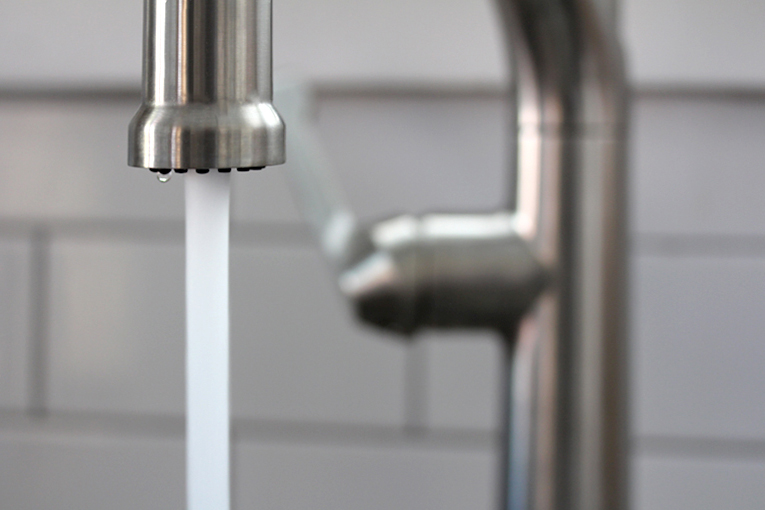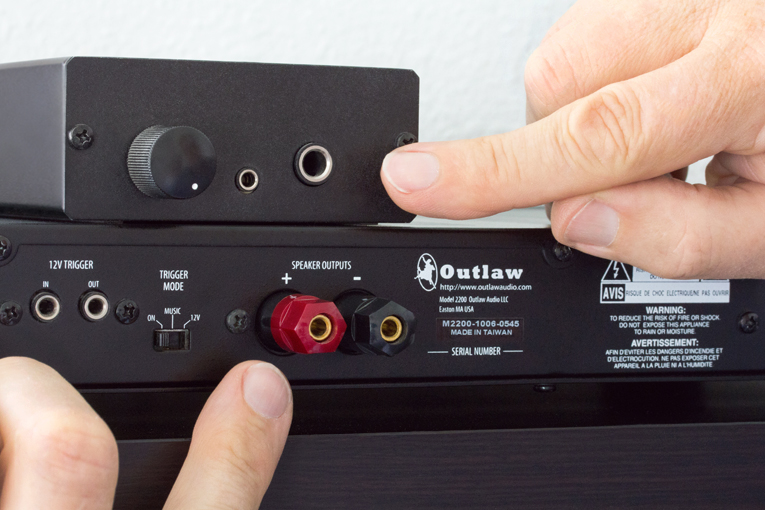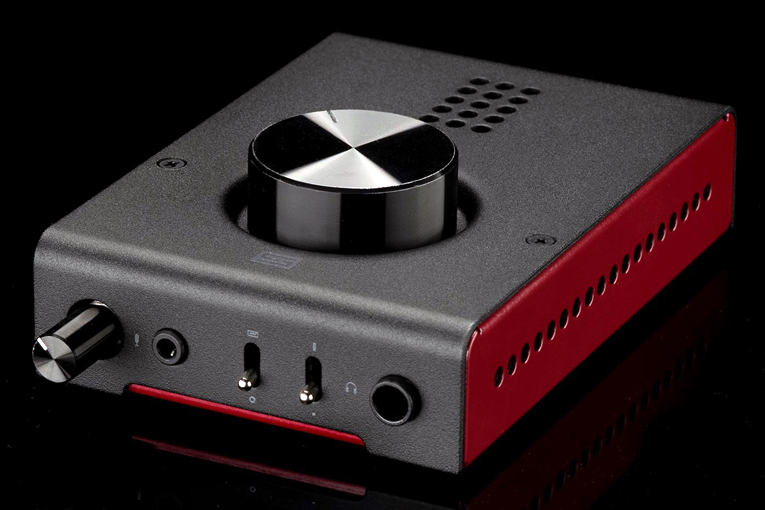You don’t have to browse YouTube reviews or audio forums for long before you encounter misconceptions about current. Many consider current to be the measure of an amp’s quality. We seldom see current in a set of amplifier specifications, but we often see marketing blurbs that mention current. There seems to be a general consensus among audiophiles that more current—even if it’s just claimed in marketing copy rather than directly specified—equals better sound. We sometimes even see current mentioned in headphone amps, even though headphones that actually demand lots of current (relatively speaking, of course) are rare.
Because audio reviews and forums tend to treat current as a mystical and nebulous (but good) thing rather than as a clearly understood physical concept, I thought it would be appropriate to discuss the subject here—and to explain how the concerns are different in headphone amps.

Honestly, I’m probably as much to blame as anyone for any misunderstandings about the subject. I’ll confess to current-related crimes in my past gigs as a marketing writer for audio companies. At the instruction of my clients (makers of amps for super-high-end consumer and low-cost commercial applications, neither of which I review), I’ve written about numerous amps as being “high-current” designs. Usually, the justification was that they were conventional class-AB amps, rather than high-efficiency class-D, class-G, or class-H amps. There’s no rule that says high-efficiency amps can’t deliver as much or more current as class-AB amps—but my clients didn’t mind implying that there was.
Learning the laws
Current (sometimes referred to as amperage) is the total flow of electricity; you can think of it as the amount of water flowing through a pipe. Electromotive force, or voltage, is like the pressure of the water inside the pipe. Resistance (with DC) and impedance (with AC, and all audio signals) are like the amount of constriction, or resistance to flow, that the pipe presents. So just as the current flow through the pipe is the pressure divided by the resistance to flow, the current through a wire is the voltage divided by the resistance or impedance.
Practically everything you need to know about current is right there in Ohm’s law and the power equation, although it usually takes years to grasp the implications of these formulas.
Most audio enthusiasts know Ohm’s law: electromotive force (in volts, or V) equals current (in amps, or I) times resistance (or impedance, in ohms or R), or V=I*R. The power equation is as follows: power (in watts, or P) equals current times voltage, or P=I*V. There’s another important equation, which is a derivation of these: voltage squared divided by resistance/impedance equals power, or V2/R=P.
Let’s think about this for a second. Assume a typical speaker has 8 ohms impedance at 1kHz. If you’re listening at a fairly normal level, you’re using between 0.5W to 10W of power. The third equation tells you that your amp is putting out 8.9V at 10W. Using the power equation, you can determine that your amp is putting out 1.1A of current.
Notice what we didn’t talk about here? What amp you used. That’s because with any amp that’s capable of putting out 10W into 8 ohms at 1kHz, you’ll get 1.1A of current under those conditions. That’s true whether the amplifier is a $34.98 Lepai LP-2020TI or a $295,000 pair of D’Agostino Master Audio Systems Relentless monoblocks. Both of these components—no matter how much potential current they can produce—put out exactly the same amount of current under normal listening conditions (i.e., a reasonably sensitive speaker that runs somewhere around 8 ohms through most of the audio range, played at typical listening levels). As long as the amp is used within its capabilities, the current is entirely dependent on the load (i.e., the speaker) and the volume setting—regardless of any claims the manufacturer might make about the amp’s ability to deliver large amounts of current.

Current becomes more important when you have low-impedance speakers, with a nominal impedance of 4 ohms or less, or dips down to, say, 2 ohms in the bass. Some amps—most notably, the ones built into many inexpensive A/V receivers—will shut down if they’re played loud when connected to a speaker of nominal 4 ohms impedance. Some amps might shut down if they’re merely connected to a 2-ohm load, even with no music playing. They consider it to be a short circuit.
Let’s say you’re listening at loud levels and hitting 100W peaks, and you have 8-ohm and 4-ohm speakers. Using the equations above, you can calculate that the 8-ohm speaker will demand 3.5A of peak current, while the 4-ohm speaker will demand 5A of current. That might be more current than the amp’s power supply can deliver, or that its output devices can handle.
So two amps that can reach 100W output with an 8-ohm speaker will put out the same current into that load. Switching to a 4-ohm load should, given V2/R=P, practically double the power output of the amp with the same input voltage. (The output would double only if the amp had a zero output impedance, which is impossible, but many amps come close.) Now here’s where high current comes in. Although there’s no industry definition for what “high current” means, an amp that produces twice as much power when switching from 8-ohm to 4-ohm loads can, in my opinion, legitimately be considered “high current.” An amp with less current—maybe producing just 160W into 4 ohms—might be labeled “high current,” though.
(By the way, of the amp brands I was asked to describe as “high current,” two could legitimately, in my opinion, deserve that title. The other—a modestly priced and very functional but generic product—put out only about 50% more power when I switched from an 8-ohm load to a 4-ohm load.)
What does this have to do with headphones?
With headphones, you usually need less than 1/10,000th as much power to produce a loud volume level. A typical speaker might need about 30W of power to reach 100dB peaks at a normal listening distance, while a typical headphone can deliver the same volume with just 1mW of power or less. One might thus intuitively, and reasonably, conclude that current isn’t such a big deal with headphones.
While speakers and headphones with low sensitivity may be considered “hard to drive,” usually when we use that phrase, we’re talking about speakers with low impedance—but headphones with high impedance. And here, voltage, not current, becomes the big concern.
Consider SoundStage! contributor Dennis Burger’s favorite DAC-headphone amp, the Schiit Audio Hel. It’s rated at 1350mW into 16 ohms, in which case it’s putting out 4.65V at 0.29A. It’s also rated at 200mW into 300 ohms, in which case it’s putting out 7.75V at just 0.026A.

In an amplifier designed for home use, connected to a 120V or 240V AC line, having power supply rails that can deliver 7.75Vrms is no big deal. But for a headphone amp it’s not so easy. The headphone amp might be built into a battery-powered device, or powered by a +5VDC USB connection (which provides at most 1.77Vrms—half the DC voltage times 0.707), in which case you’d need to add a DC-to-DC converter to kick the voltage up—and the form factor of many portable audio products doesn’t provide sufficient space or cooling capacity for that. The Hel achieves its impressive power through the use of a separate ±12V power supply, and the Hel’s relatively large, well-ventilated chassis (about the size of two packs of playing cards side-by-side) provides ample cooling.
I hope this has shed some light on the topic of current—but what I really hope is that it’ll inspire some readers to question the statements of a writer, podcaster, YouTuber, or manufacturer who implies that high-current amps necessarily deliver better sound quality.
. . . Brent Butterworth







